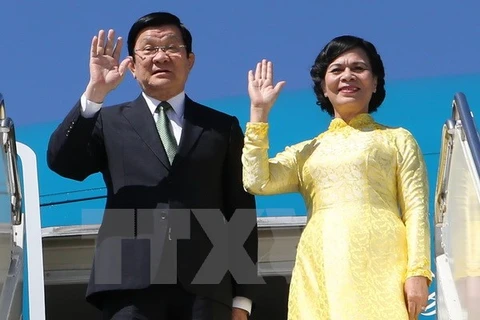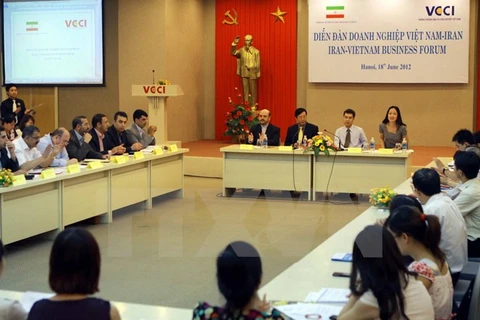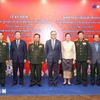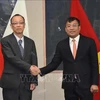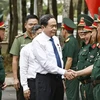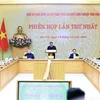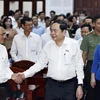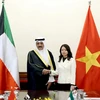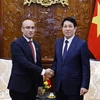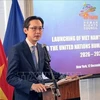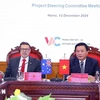 Deputy Prime Minister Pham Binh Minh (R) and Irani Deputy Foreign Minister Ibrahim Rahimpour (L) (Source: VNA)
Deputy Prime Minister Pham Binh Minh (R) and Irani Deputy Foreign Minister Ibrahim Rahimpour (L) (Source: VNA)Hanoi (VNA) – President Truong Tan Sang and Irani President Hassan Rouhani will discuss steps to boost bilateral trade, particularly in finance and banking, and oil and gas when he visits Iran, which is part of his African and Middle East tour from March 9-15.
Since the establishment of bilateral diplomatic ties on August 4, 1973, Vietnam and Iran have seen strides in their relationship across the fields of politics, economy and trade, culture, education, and science and technology.
On the back of various signed agreements, Iran is keen on working with Vietnam on industry, petroleum, construction, transport, cement production and fertiliser, which are also the Middle Eastern country’s strengths. Iran also expects to import more farm produce from Vietnam.
However, statistics show that Vietnam – Iran economic links remains limited and are yet to match their potential.
Two-way trade soared from 6.5 million USD in 2001, to 185.6 million USD in 2011, but dropped to 106.7 million USD last year, of which Vietnam’s exports accounted for 72.3 percent.
It was attributed to the impacts of economic sanctions on Iran, leading to a failure to agree on a common payment method, as well as a lack of information about each market.
Due to the US’s embargo on Iran, the Danan oil field – a project signed between the PetroVietnam Exploration and Production Corporation and the National Iranian Oil Company, halted its operation.
After economic sanctions against Iran were lifted this January and the Joint Comprehensive Plan of Action between Tehran and the P5+1 countries, including the US, Russia, UK, France, China and Germany took effect last July, the gate to global economic integration has become wider for Iran, bringing opportunities to global partners, including Vietnam.
With a population of 80 million, Iran is a major Middle East market, while Vietnam is a gateway to the Association of Southeast Asian Nations.
Over the past five years, Vietnam has shipped seafood, rice, tea, coffee, pepper, cashew nuts, ratten and bamboo items, rubber, plastics, spare parts, electronic accessories, and garments to Iran and imported plastic materials, petrochemical products, metal, wheat, textile-leather and footwear.
During meetings between the leaders, Vietnam and Iran expressed a wish to uphold their traditional friendship and lift ties to a greater height for the benefit of the two peoples, predominantly in the areas of oil and gas, industry, agriculture, and finance and banking.
On the sidelines of the Asia-Africa Summit in Jakarta last April, President Sang and his Iranian counterpart Hassan Rouhani pledged all possible support for their business communities in order to raise two-way trade.
The Irani government gives top priority to offering incentives that attract foreign direct investment and to adopting technological advances. It is currently upgrading oil and gas and socio-economic infrastructure at a cost of hundreds of billions USD – more attention will be paid to oil and gas, aviation, mining and steel.
As a natural resource rich country in the Middle East, Iran ranks fourth globally in terms of crude oil production and second in fuel reserves, accounting for over 10 percent and 18.2 percent of the world’s total, respectively.
Iran is also the second largest economy in the Middle East – Northern Africa region, with a total gross domestic product of over 400 billion USD, behind only Saudi Arabia.
Experts forecast that Iran could grow at least 4 percent this year.-VNA

